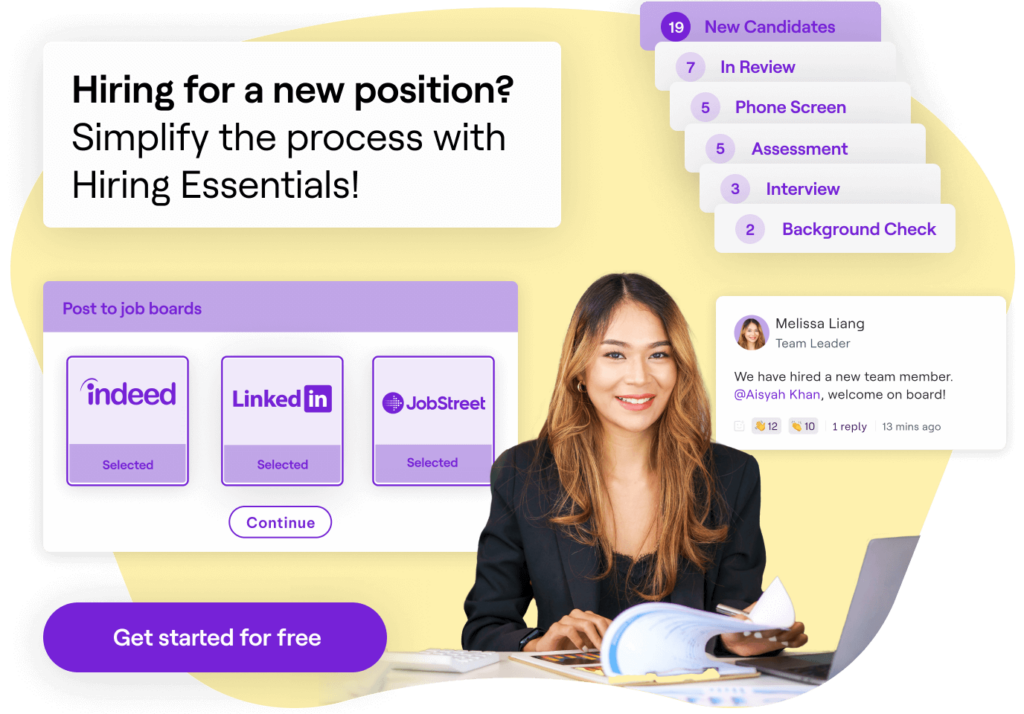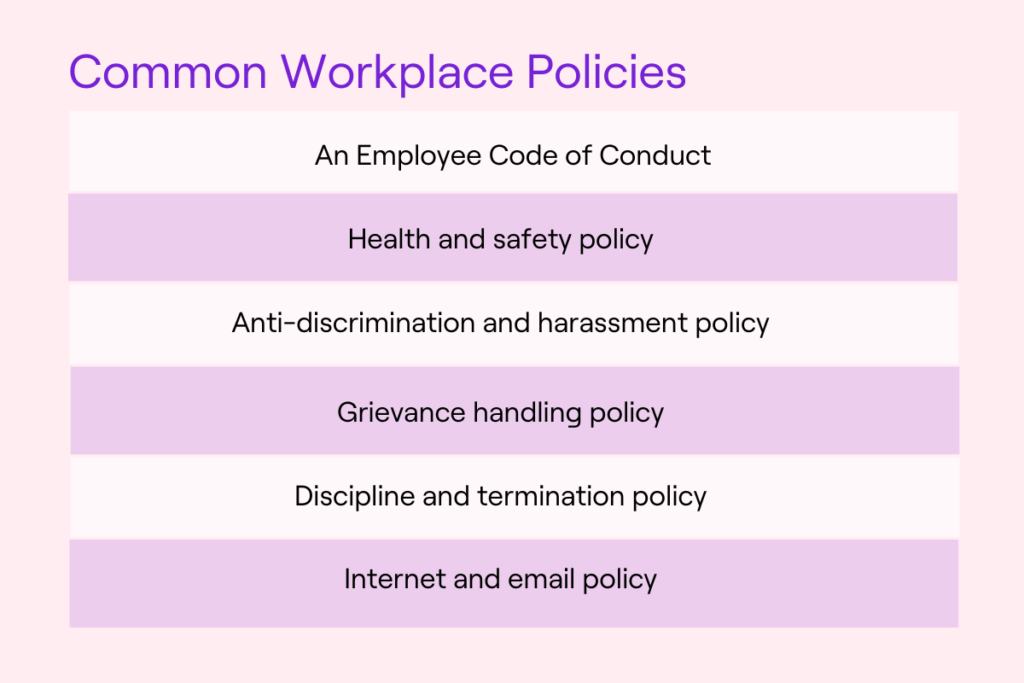
Congratulations! If you’re reading this blog you must be on the verge of hiring your first staff member and writing your own employment contract. Building a team is an exciting step in growing your business so here’s to you!
On the flip side, it can also be a little scary. You’re making a commitment to pay someone a salary for one thing – that’s a lot of pressure!
Then there are all the legalities to consider. In that case, let’s start with the first formal document you’ll need to draw up; the employment contract.
What are employment contracts?
Let’s first answer the question; what is an employment contract?
An employment contract is a legally binding document between employer and employee that lays out the agreed terms and conditions and employment agreements that each party will abide by for the duration of the employment term.
The employment contract is designed to protect you (the employer) and your new employee, ensuring there is no confusion on requirements or remuneration for the job that needs to be completed.

Is a written contract required?
In Malaysia, any employment that lasts longer than one month requires a formal written contract according to the Employment Act.
The Employment Act (EA) does not cover every single employee in Malaysia, but it does cover the following:
- Employees who have entered into a contract of service with an employer, whose monthly wages do not exceed RM2,000; or
- Employees who have entered into a contract of service with an employer, whose monthly wages exceed RM2,000 but are engaged in the following:
- Manual labour;
- Operation or maintenance of any mechanically propelled vehicles;
- Supervision of other employees engaged in manual labour;
- Any capacity on a vessel; and
- Domestic service

Employers must keep all labour contracts for at least six years after the contracts have expired. An employment contract also cannot restrict an employee’s rights to participate or join trade unions.
In Malaysia, an oral contract can also be accepted as employment, as provided by the Contracts Act 1950 and Employment Act 1955. However, oral contracts can be difficult to prove and enforce, and hence written contracts are recommended to avoid future disputes over the existence of the contract, and terms agreed by both parties.
Even if a contract of service is signed and agreed upon by both parties, Section 7 of the EA states that terms which are less favourable shall be substituted by those prescribed under the EA. Section 20 of the Industrial Relations Act 1967 also states that employees can only be terminated with ‘just cause or excuse’.
Such employment laws help to safeguard the interests of employees against non-favourable contractual terms. The creation of such employment contracts also allow future disputes to be resolved via the Labour Court or Industrial Court.
What type of employment contract do I need?
Just like your employees, every employment contract is unique; a standard employment contract simply doesn’t exist.
This probably isn’t what you want to hear as a busy business owner but tailoring your contract of employment to each new hire is best practice. It’s all about ensuring terms are clear and understood, and risk is minimised for both parties in the employment relationship.

What to include in written employment contracts
The contract should specify crucial terms of the contract of service between the employer and employee, such as:
- Work scope;
- Work location;
- Wage rate;
- Wage period;
- Employment benefits;
- Public holidays;
- Annual leave;
- Sick leave;
- Maternity and paternity leave;
- Confidentiality clauses;
- Termination and dismissal;
- Retirement; and more.
You should also consider including any specific conditions or clauses to protect and/or benefit you as the employer, such as:
- A confidentiality clause to protect trade secrets, intellectual property and confidential information
- A non-compete clause to prevent your employee from leaving to work for a competitor
- A non-solicitation clause to ensure you maintain full ownership of client relationships
- A trial or probationary period to ensure the employee is the right fit for your business
- A code of conduct and/or dress code that you’d like to see your employee follow
Every employment relationship is different
A written employment contract is a legally binding document that lays everything out on the table; terms, expectations on employee’s performance, contingency plans and more.
It’s designed to protect your employee but also you and your business, so it’s worth putting in the time to get it right.
Unfortunately, there is no one template that you can copy and paste because every employment contract will be different. So, start with the basics like a detailed job description and agreed salary.
If you’re considering hiring overseas, these hiring guides will help you understand how employment law differs across different countries:
- Australia
- New Zealand
- Philippines
- Singapore
- Indonesia
- United Kingdom
- Canada
- Netherlands
- United States
The benefits of using digital contracts
Everything’s going digital these days, and employment contracts are following suit!
But what are the benefits of using an electronic employment contract over a classic paper version? Well, they simply make life a whole lot easier for you and your employees. Here’s how.
1. They save everyone time
With traditional paper contracts, you have to create the document, print it, and send it out via snail mail. Alternatively, you might send a copy via email – which will require your new hire to print it out and send it back to you (and who has a home printer these days?).
With digital contracts, you’ll simply flick it over to your new employee via the cloud. They can receive it, make a digital signature and have it back to you within minutes.
2. They streamline the offer process
Every hiring manager will know that recruitment is a race! The faster that you secure that person, the more you reduce the risk of having them be snapped up by another company.
When you’re working digitally, you streamline the whole offer process. It’s not only faster, but it’s also simpler. It can help you get your new recruit confirmed and excited to get started.
Looking for a way to simplify your hiring process? Go digital and save time with our ATS software.
3. They are easily accessible
Are you heading into a performance review and need to quickly review details of someone’s employment? Maybe your employee wants to double-check their work details at tax time?
These are tasks that, before electronic contracts, could have held you up for an hour (or more!). Instead, you can access your digital files securely and in seconds on the cloud.
Using electronic employment contracts can help you ditch tedious filing tasks. Search for an employee’s contract in seconds and say bye-bye to filing cabinets for good.
4. They reflect well on your business and HR team
Digital contracts are just one of the recruitment tools that your HR teams can use to provide a great recruitment experience.
Instantly receiving a digital contract after they accept an offer can help build a new team member’s confidence in your business. It shows that your business and HR team are efficient, tech-savvy and helpful.
See four more reasons why you should make the switch to digital employment contracts.

Other essential parts of the onboarding process
When you issue your employment contract, it’s also best practice to include some other essential onboarding information.
Workplace policies
Every business needs to have clear and easy to understand workplace policies and procedures in place.
They protect your business from a range of situations, whether it’s social media, inappropriate computer use, discrimination or harassment. Policies are key to developing your business through your people and protecting it against financial risks.
A policy is only effective if properly communicated and uniformly enforced to all employees. This means you need to explain the policy and provide training if necessary to ensure your employees understand how to comply with the policy and the consequences if they breach it.
Make sure employees sign off on a document acknowledging that they are aware of the policy and understand it completely.
Did you know that Employment Hero has a library of HR policy templates written by employment experts on our platform? Learn more about how our HR tools can help you streamline hiring.

Employee handbook
If you have one, distribute your employee handbook to your new team member early in the onboarding process.
An employee handbook will likely not cover the formal information that has been covered in the employment contract. Rather, think of it as a friendly introduction to your business.
Common elements of an employee handbook
What your employee handbook includes is up to you, but here are some helpful additions that will help your team member get started;
- A brief history of the business
- Information about your company’s mission and values
- An overview of your business goals
- An introduction to the senior leaders of the team
- An organisational chart to better understand who’s who
- Any details on your company culture (when does the team come together, what do they do to celebrate their achievements)
- A training manual (if required)

Job description or list of duties
A job description or position description (JD or PD) should be a comprehensive document that gives your employee a deeper understanding of their role.
While a job description or list of duties is generally provided at the recruitment stage, it’s always a good idea to reissue these on commencement of employment. Providing this kind of document can help your new employee prepare for their role, and can give them a reference to return to throughout their employment.
Creating your best job description
Not sure how to create a comprehensive job description? Our free job description template can help.

Employment Hero can help!
Did you know that Employment Hero has an easy Paperless Onboarding feature? This feature can support you in quickly putting together a fully compliant digital employment contract that can be signed electronically.
If having a new hire fully onboarded in a couple of minutes prior to their start date sounds like a dream to you, get in touch with one of our small business specialists today.
If you need help staying compliant across your business, download our free guide to HR compliance in Malaysia.

Download our free payroll guide
If you need help staying compliant when it comes to payroll, download our free Guide to Payroll in Malaysia now.
The essential guide to HR compliance.
Disclaimer: The information in this article is current as at 1 July 2022, and has been prepared by Employment Hero Pty Ltd (ABN 11 160 047 709) and its related bodies corporate (Employment Hero). The views expressed in this article are general information only, are provided in good faith to assist employers and their employees, and should not be relied on as professional advice. The Information is based on data supplied by third parties. While such data is believed to be accurate, it has not been independently verified and no warranties are given that it is complete, accurate, up to date or fit for the purpose for which it is required. Employment Hero does not accept responsibility for any inaccuracy in such data and is not liable for any loss or damages arising either directly or indirectly as a result of reliance on, use of or inability to use any information provided in this article. You should undertake your own research and to seek professional advice before making any decisions or relying on the information in this article.



